Reserve Name: Hempton Marsh
Address:The entrance to the reserve is located on the A1065 just west of Fakenham where the road crosses the River Wensum. Information from:
Norfolk Ornithologists Association, registered charity no. 267670, Broadwater Road, Holme Next The Sea, Hunstanton, Norfolk, PE36 6LQ
Phone Number: 01485 525406
Email: info@noa.org.uk
Opening Hours: Dawn till dusk.
Website: Hempton Marsh
Map Reference: TF 913296
Google Map: Hempton Marsh NOA
The reserve was visited and assessed over a number of days during March 2017 by Peter Bangs.
Overview
Hempton Marsh Nature Reserve consists of 29 acres (12 ha) of ancient wet meadow and mature woodland, situated on the south-western outskirts of Fakenham, and bordered on the south side by the River Wensum. The site is wardened regularly by a team of volunteers.
The Wensum valley is within The Broads Environmentally Sensitive Area, and contains areas of wet meadow and damp woodland that hold a unique variety of flora and fauna, especially birds whose numbers elsewhere may have been adversely affected by modern farming practices and by land drainage. The creation of a nature reserve with public access provides a means of preserving and protecting the site, and allows for the enjoyment and study of nature by visitors.
The reserve was purchased in 1999 through a Heritage Lottery Grant. Since then the NOA has focussed its efforts on the development of the habitat at the site, including restoration of an ancient meander in the river (See below). In addition, there has been systematic monitoring of the wildlife that the reserve supports. Further funding in 2006, from the NOA’s Hempton Access Project, supplemented by matching funding from Jordans’ Cereals, allowed the construction of a boardwalk and hides to give effective public access to the site without damage or disturbance to the habitat. The reserve was officially opened in April 2008, and public events are run at the reserve each year including moth days and ringing demonstrations. The NOA’s work to protect and develop the habitat of the site attracts Higher Level Stewardship funding.
There are two hides and a viewing platform. The Marsh Hide looks out over the grazing marsh and a dragonfly pond immediately in front of it. Barn Owl and Marsh Harrier can sometimes be seen hunting over the grazing marsh. A second hide looks over a feeding station in the alder woodland, and beyond this a platform looks out across the river meander in the south-west corner of the marsh
Flora & Fauna
Bird species of particular interest include Marsh Harrier, Buzzard, Barn Owl, Lapwing, Redshank, Oystercatcher, Woodcock, Water Rail, Marsh Tit, Brambling, Siskin and Redpoll. Kingfisher and Red Kite are seen from time to time, and several warbler species are present in the summer.
Hempton Marsh is an important site for flowers, supporting extensive areas of Southern Marsh Orchids and Yellow Rattle in early summer. The site also supports a wide range of butterflies, moths, dragonflies and damselflies.
Although there is no access to the grazing marsh, many butterflies and dragonflies, which thrive there can be enjoyed from the hides and the boardwalk on sunny days.
Access
Hempton Marsh Nature Reserve consists of 29 acres (12 ha) of ancient wet meadow and mature woodland.
The entrance to the reserve is located on the A1065 just west of Fakenham where the road crosses the River Wensum.
Public Transport links: Unfortunately there doesn’t seem to be a bus service going past the reserve.
Parking:
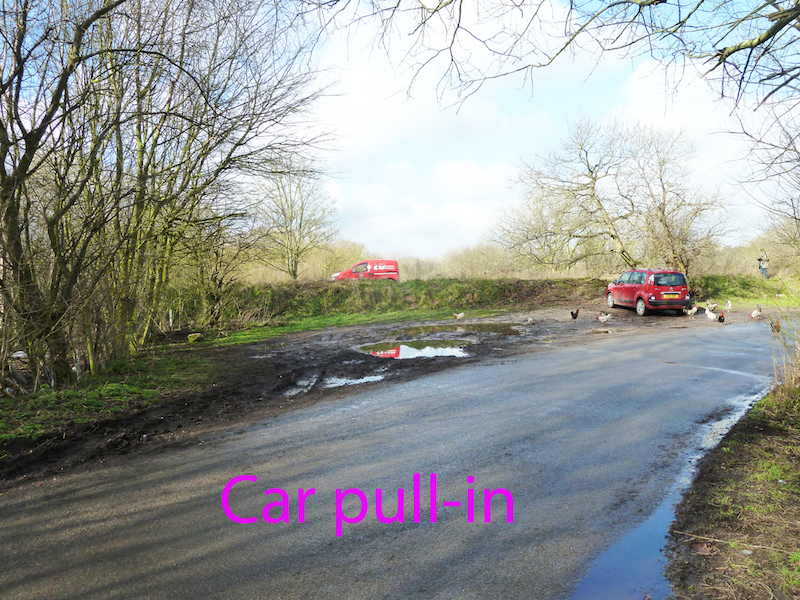
Access to this reserve poses a particular conundrum. It is on a very busy, and very fast, main road. Although there is physically room to pull off this road outside the reserve, pulling back on to the road is a dangerous manoeuvre, due to the lack of good visibility. This is especially so when roadside vegetation has grown up in the summer. For this reason it was a planning requirement when the reserve was opened to the public that no parking should be allowed in front of the reserve entrance. Accordingly the NOA follows that requirement. This is what their website states:
“There is strictly no parking in front of the reserve entrance itself.
The NOA would suggest leaving vehicles at a pull-in on a side road (Goggs Mill Road) opposite the reserve entrance.
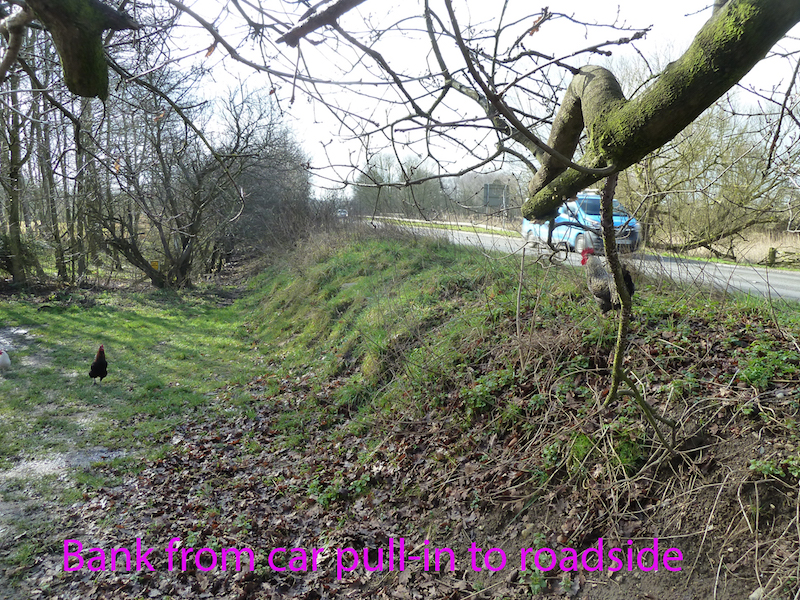
To reach the pull-in, follow the A1065 south from the roundabout on the A148 just west of Fakenham. About three quarters of a mile down the A1065, just after the bridge over the river Wensum, take the first turning left towards Fakenham Garden Centre, and then immediately left again, before the Garden Centre itself. Follow this single track road (which has several bends and a number of pull-off places) until you reach a pull-in on the left which faces back towards the bypass. Please park considerately as this site is also used by local people. Visitors will need to cross the bypass on foot, which will bring them to the reserve entrance, directly opposite the pull-in on the other side of the A1065.”
There would be room for a minibus if all the space is not already occupied. Much of the pull-in gets very muddy with large puddles after wet weather.
There are two significant issues with the parking pull-in. In wet weather it gets very muddy – to the point where wheelchair use would be very difficult. And the pull-in is several feet lower than the main A1065. The only way to get up to the road is to scramble up a fairly steep grassy bank, which has a few informal steps cut into it. For able-bodied birders this can work, but it may not work for everybody. Please look at the photos to get an idea of whether or not you would be able to manage these manoeuvres.
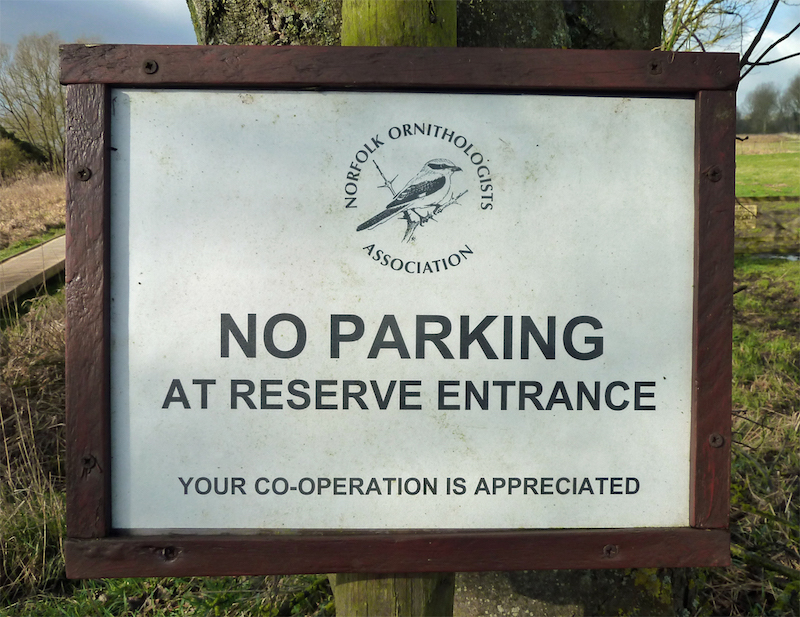
The NOA advises that all visitors should only attempt to cross the A1065 with extreme caution. Due to the difficulty of access unaccompanied wheelchair users cannot hope to gain access to the site.
All this is a great shame, as once inside the reserve, access for wheelchair users is superb, as all paths are boardwalks, newly replaced in autumn 2016.
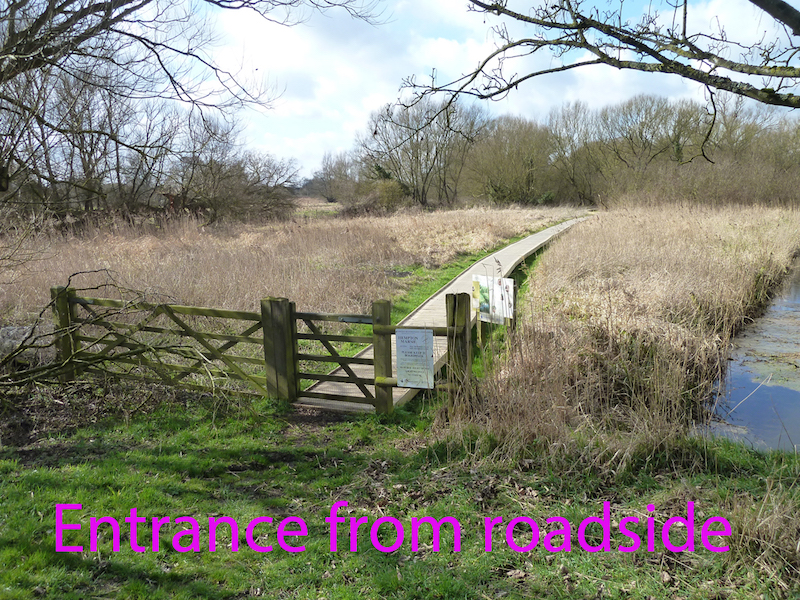
The site is wardened regularly by a team of volunteers. There are no accessible toilets nor a public telephone. There is no visitor centre.
To make any enquiries about this reserve please contact the NOA Observatory at Holme-next-the-Sea (see above)
If telephoning please note that the Warden at the Observatory may be out tending the nets, or doing other tasks on the reserve.
There is an information board just inside the reserve, but this is for general information on the reserve and does not contain any specific information regarding access for the disabled.
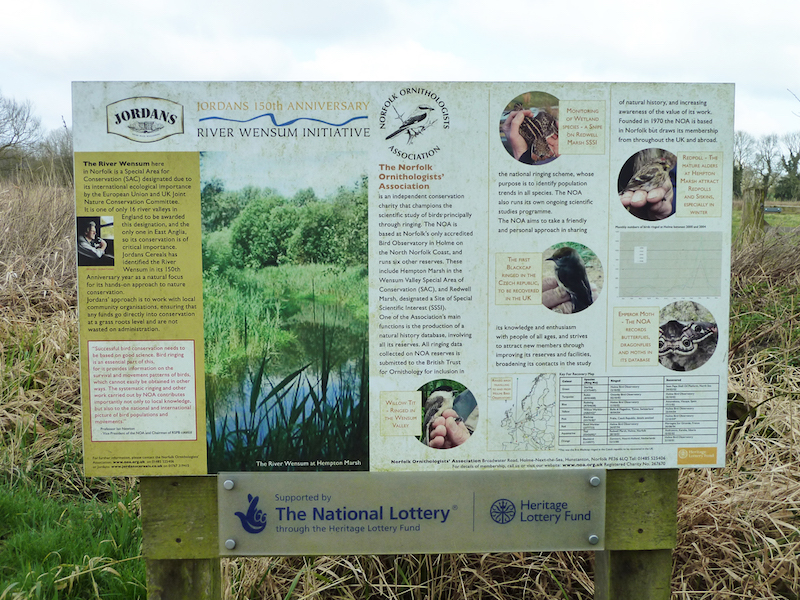
Path distances within the reserve are as follows:
From the entrance gate to the first (Marsh) hide – about 150 metres.
From Marsh Hide to the junction where the path divides – about 80 metres.
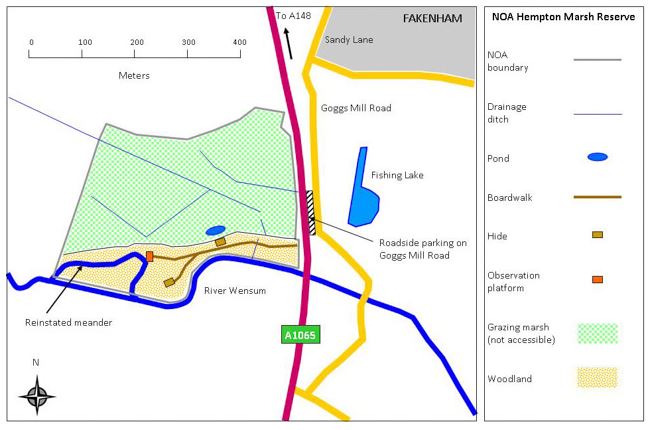
From the junction to the viewing screen – about 50 metres.
From the junction to the second (Woodland) hide – about 50 metres.
Maximum distance from the entrance gate to Woodland Hide or to the viewing platform is <300 metres.
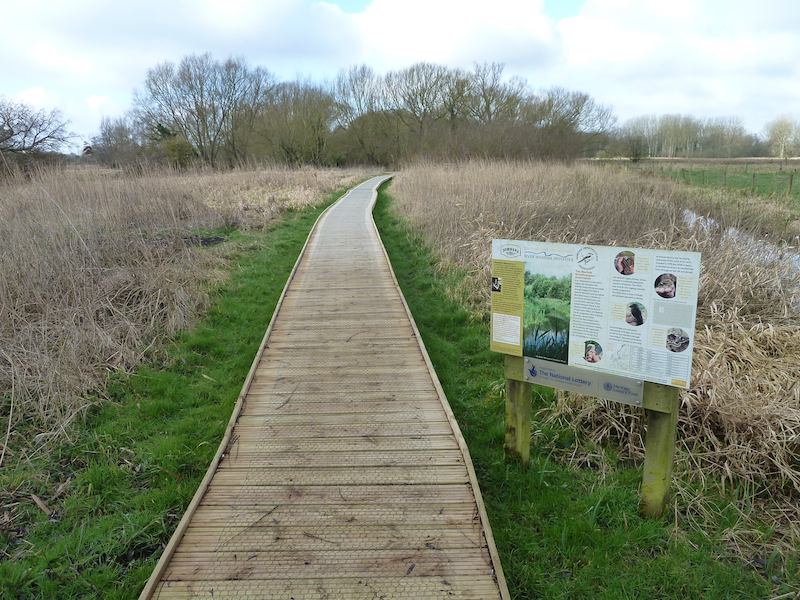
From the roadside to the entrance gate is an uneven grass surface. Once inside the reserve all the paths are a modern boardwalk – totally reconstructed in autumn 2016 thanks to grant funding from the Goldcrest Charitable Trust. This has been very well done, to a high standard. The boards are wooden decking boards, with wire netting on top for grip. The boardwalk is c. 120cms wide and all other paths at least 115cms wide. There are upstands at the edges. The presence of the boardwalk allows access for all to this very wet reserve. The boardwalk surface is raised about 50 cms above the ground, which in many places is very soft, and in winter has standing water.
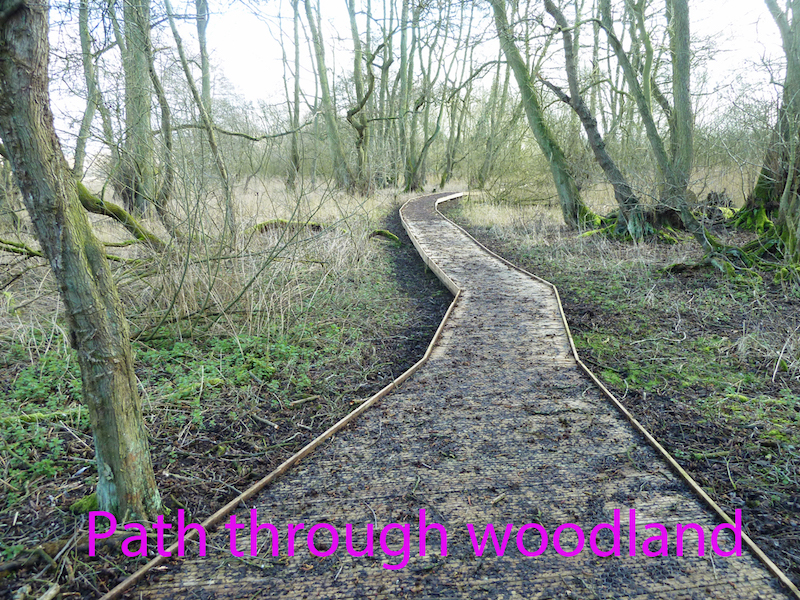
The grass verge from the roadside to the entrance gate has a low gradient slope down to the gate. The path by the Marsh Hide is gently sloped so that it matches the level of the hide door. The rest of the boardwalk is just about level.
There are no steep slopes and all have no or very little lateral slope. There are no overhanging branches or other obstructions on any of the paths.
There is an entrance gate to the reserve. This opens in to the reserve, is 115 cms wide, with a latch on the inside at 75 cms above the ground level.
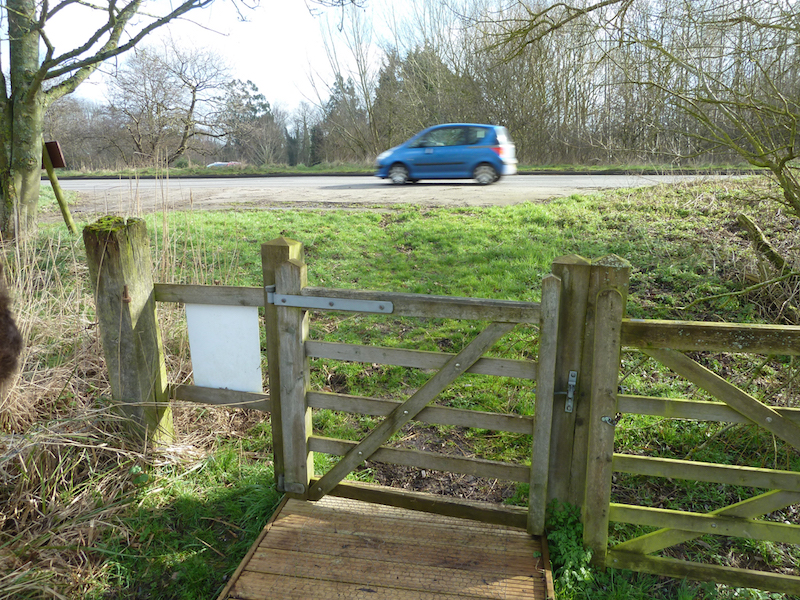
Although there are no specific wheelchair passing bays on the 120cm-wide path, the areas outside each hide, at the junction where the path divides and by the viewing platform, would allow wheelchairs to pass with ease.
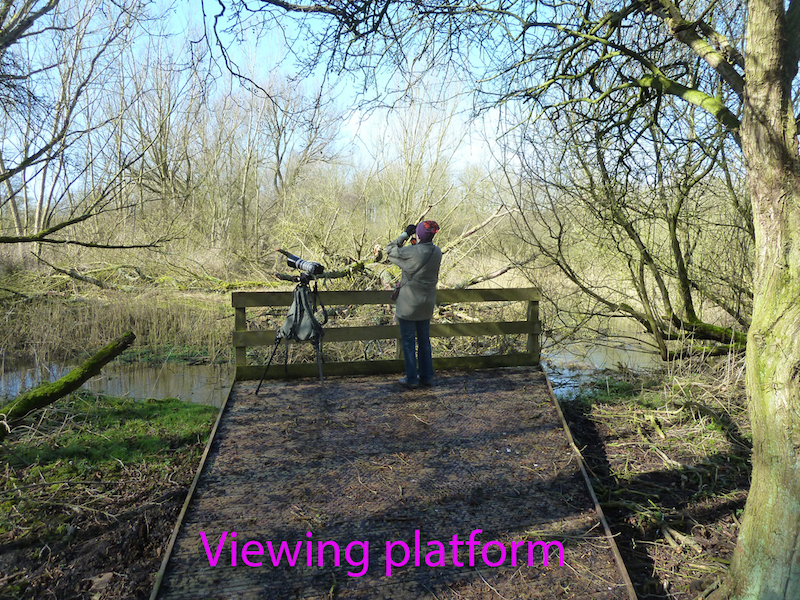
There are no benches or seats except in the hides so there are no resting places along paths. NOA members can purchase a key to the hides, which are otherwise kept locked.
Hides
Marsh Hide
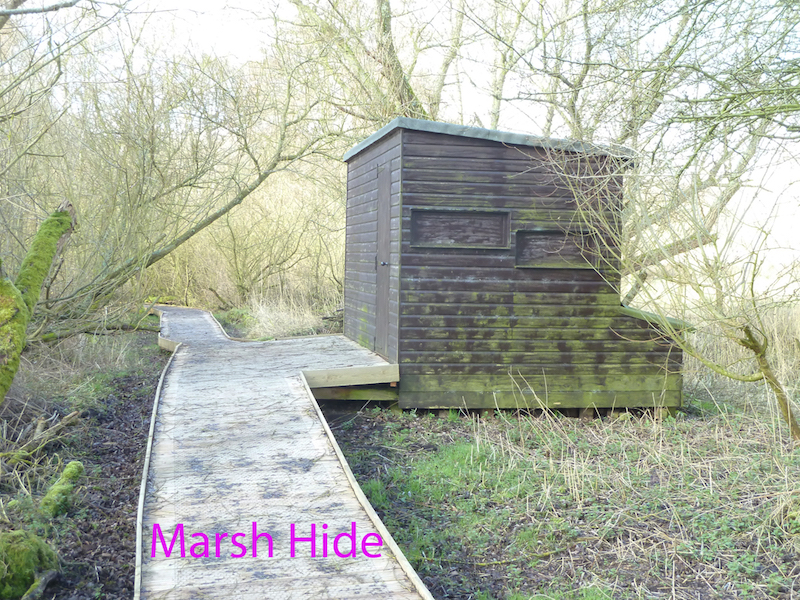
Note that the boardwalk has been sloped up gently to meet the level of the entrance threshold. There is a drop down into the hide of 8cms from the boardwalk level. The door is 88cms wide. There is knee space. There are shelves to the viewing slots which are 20cms deep, 15cms below the windows at 85cms above floor level with the window 100cms above floor level. The viewing gap is just 35cms and 2 flaps – each about 75cms wide face to the front of the hide, with another of similar size opening to the right, at the same level. Wheelchair users thus get a wider view than is sometimes the case. The flaps are light, easy to grip and raise and slot into an open position, however anyone unable to rise would have trouble shutting the flaps.
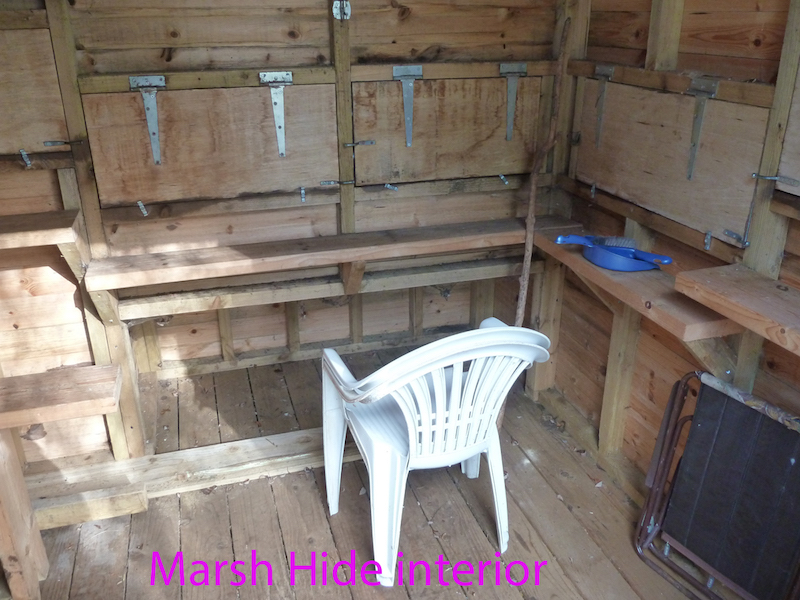
Two light-weight plastic chairs are provided. This is a modern hide, in excellent condition. The provision of a gutter and downpipe helps keep this hide drier than many!
Woodland Hide
The very accessible path leads to a wide platform, and there is only a very small (2.5cms) drop down into the hide from the boardwalk. The door is 86cms wide.
The internal configuration is very similar to the Marsh Hide.
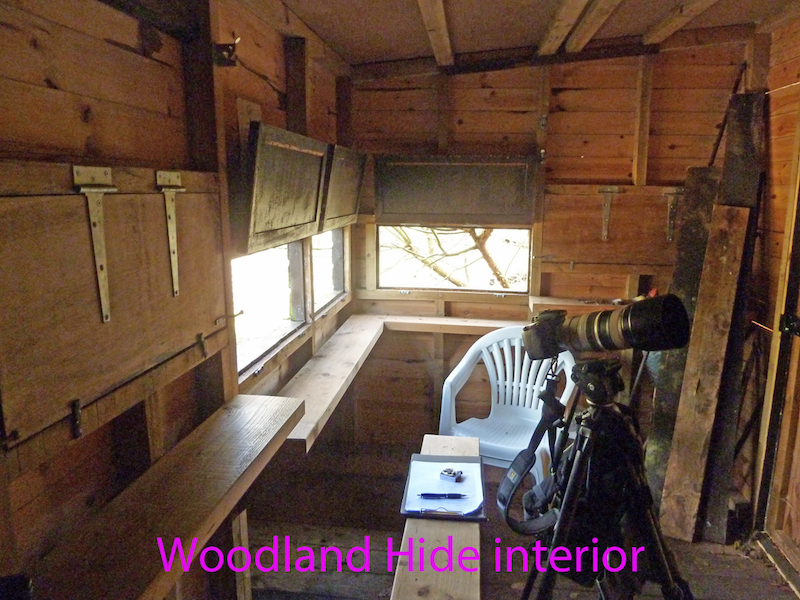
There are some containers for birdseed for the feeders outside this hide, but they are at the back of the hide, and there is plenty of room between them and the seating. Here two are two light-weight plastic chairs.
